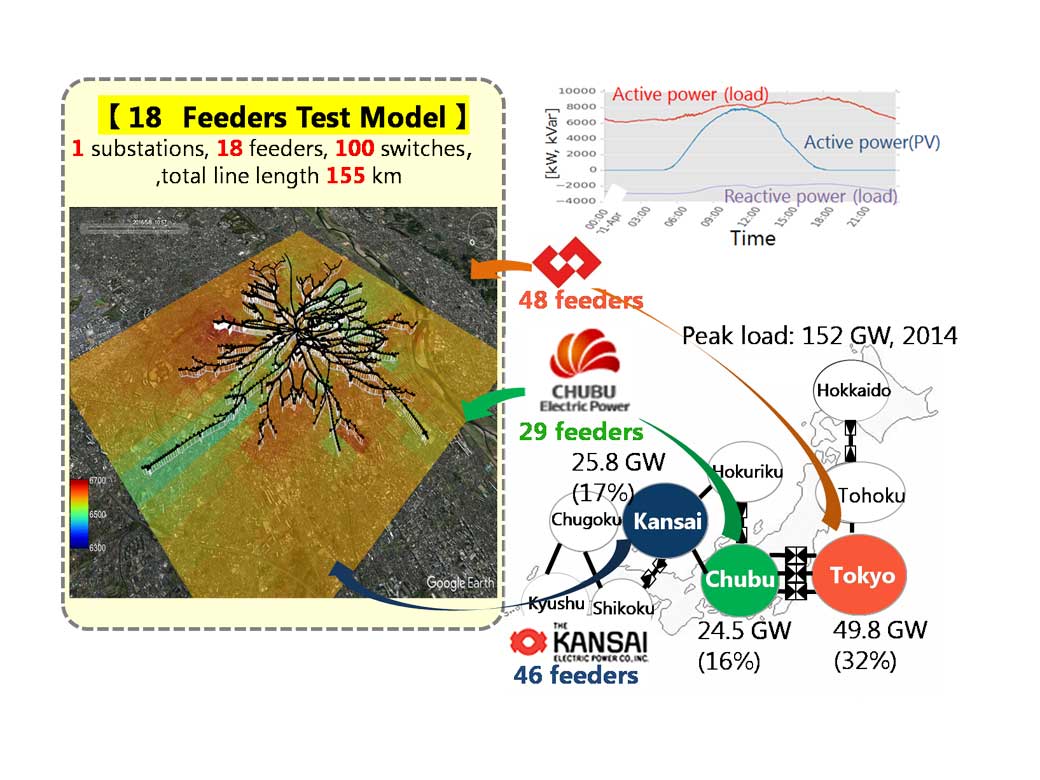Versatile, distribution system model for electricity consumption simulation by region
Thu, Oct 12, 2017-
Tags
Waseda builds model based on actual distribution line data from TEPCO Power Grid, Chubu Electric Power Co., and Kansai Electric Power Co.

Image of the distribution system model
As illustrated by the spread of distributed generation of photovoltaic power and the demand control that include demand response, the way energy is consumed by electricity consumers has changed dramatically in recent years. Predicting the overall supply and demand structure of the future, studying its effect on the supply infrastructure, and analyzing and investigating an energy management system (EMS) where providers and electricity consumers cooperate together will become important.
Although there are evaluation models of distribution lines worldwide, a standard model that includes a regional distribution system with load distribution in detail was not known to exist. Therefore, universities and research institutions have evaluated technology development based on their original distribution system models, but a need to build a highly versatile distribution system model based on actual data and making it public so that it is available for anyone to use has increased.
Based on actual distribution line data from TEPCO Power Grid, Chubu Electric Power Company, and Kansai Electric Power Company, researchers from Waseda University Advanced Collaborative Research Organization for Smart Society (ACROSS) built a versatile system distribution model with geographical data that simulates regional features on a large, citywide scale. This model is open nationally and internationally.
To be specific, the researchers guessed how the building was used and its electricity consumption curve for every individual electricity consumer through actual electricity consumption of households, convenience stores, and buildings, and then succeeded in building a distribution system model that simulates an actual region. By adding geographical data to the distribution system, analysis taking into consideration solar radiation changes due to cloud movements and transportation by electric cars turning into power loads became possible. Space and time-based, multifaceted analysis on issues that arise from solar power can now be done.
This distribution system model serves as a versatile calculation simulation platform to quantitatively evaluate EMS. By providing this model to the public both nationally and internationally, universities and research organizations can standardize simulations of a large, citywide scale for investigating electricity consumer behavior.
For further improvements, ACROSS researchers must figure out how to represent electricity demand decrease in this model, caused by the spread of energy conservation devices and change in demand due to population decrease. They must also think about how to model transportation by electric cars as well as charge and discharge, which are both difficult to predict. Moreover, because the calculations become more complex as the model covers larger areas and as the simulations become more in depth, the researchers must consider how to speed up the calculation speed.













